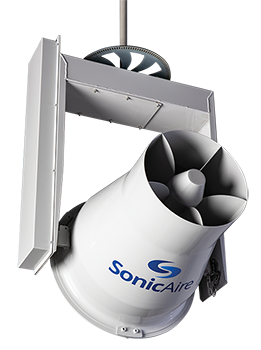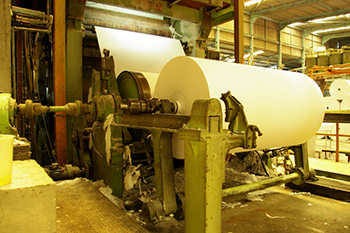Each American consumes around 480 pounds of paper per year in various product use.
 As paper manufacturers and paper converters put forth efforts to meet these demands, one aspect of production becomes paramount: safety.
As paper manufacturers and paper converters put forth efforts to meet these demands, one aspect of production becomes paramount: safety.
The crafting of paper products inevitably produces dust, which quickly accumulates if not managed properly. This layer of flammable debris can prove disastrous in the event of a fire or combustible dust explosion. While the frequency of explosions in the paper and pulp industries appears to be lower than that of other fields, this should not encourage facility managers to lower their vigilance. According to the Chemical Safety Board’s 2006 report, 24% of the combustible dust explosion incidents that occurred in the United States over the previous 25 years were due to wood and paper dust.
– Tissue World Magazine
Clearly, the risk is present, especially for fire. In fact, the low bulk density of the dust produced in paper facilities offers high surface area and permeability that allow the particles to easily mix with air. This can lead to the creation of combustible dust clouds as well as further the distribution of dust throughout the overhead areas of the plant, particularly in pulp and paper mills. The bottom line: paper products generate dust that can put facilities at risk.
Risk Regulations
NFPA (National Fire Protection Association) recently updated its NFPA 652 combustible dust standard for maintaining clean, safe environments for employees. And OHSA (Occupational Health and Safety Administration) has also established the National Emphasis Program (NEP) on combustible dust, which focuses on 64 industries, including those involved in paper products. The organization estimates that 30,000 U.S. facilities across all industries are at risk for explosions caused by combustible dust. Additionally, prolonged exposure to paper dust can create health risks for employees such as respiratory illness, leading to chronic cough, wheezing, or chest tightness.
The standards established by NFPA and enforced by OSHA further encourage plant operators to take steps to reduce the risk in their facilities. Not only are these efforts intended to improve conditions, they also help ensure owners aren’t subject to the steep fines that OSHA can impose.
Risk Factors
Before facility owners can take steps to mitigate this risk, it’s important to understand its source. Exactly how can a little dust produce a big fire? Combustible dust explosions can occur if certain conditions exist in the environment.
The first is the presence of combustible dust. The pulp and paper industry produces this in the forms of wood, paper, pulp, coal, ashes, resins, and starch. The next element needed to generate disaster is an ignition source. This could come from friction, electrostatic discharge, open flames, hot work, hot surfaces, embers, lighting, heaters, equipment surfaces or overheated bearings. If a facility produces combustible dust, and it remains confined in the area, any of these ignition sources can lead to an explosion and/or fire.
Risk Solution
Recognizing the risk posed by combustible dust, paper product manufacturers are seeking solutions to keep their facilities safe. They are discovering that industrial dust fans are a proactive solution to reduce the risk of dust explosions and fires and create a cleaner, healthier work environment.
The fans generate these improved conditions due to three key features:
- Dust control: Fans for continuous dust control create an air barrier that forces dust particles to the ground. They effectively prevent upward thermal currents from holding dust in the air. This managed airflow prevents the generation of dust clouds and the accumulation of dust on structural components and equipment.
- Fire prevention: A lack of combustible dust accumulation effectively reduces the risk of fires and explosions. Each industrial dust fan system is engineered to provide the optimal prevention for the paper facility in which it is installed. Dust fan manufacturers recommend the ideal location and fan system application for each setting. Facility operators can then use this system to eliminate their risk of overhead combustible dust and help prevent dangerous incidents.
- Convenient maintenance: Industrial dust fans direct dust downward, where it can be removed using regular floor-cleaning methods. This eliminates the need for time-consuming and potentially dangerous housekeeping efforts in hard-to-access areas. The fans can be set to run automatically and operated using convenient control panels.
Learn more about how industrial dust fans work.
SonicAire Partners with the Paper Industry
SonicAire partners with paper plant operators to reduce risk and enhance safety. As the global leader in industrial dust control, SonicAire provides customized solutions specific to each facility. Applying proprietary technology, our dedicated team recommends the ideal fan system for each paper, pulp or paper-product operation. The result is a system that is engineered to effectively eliminate dust accumulation, prevent dust explosions and create a safer work environment for your business.
To reduce combustible dust risk at your facility, contact the industry leaders at SonicAire for a custom solution and quote.


